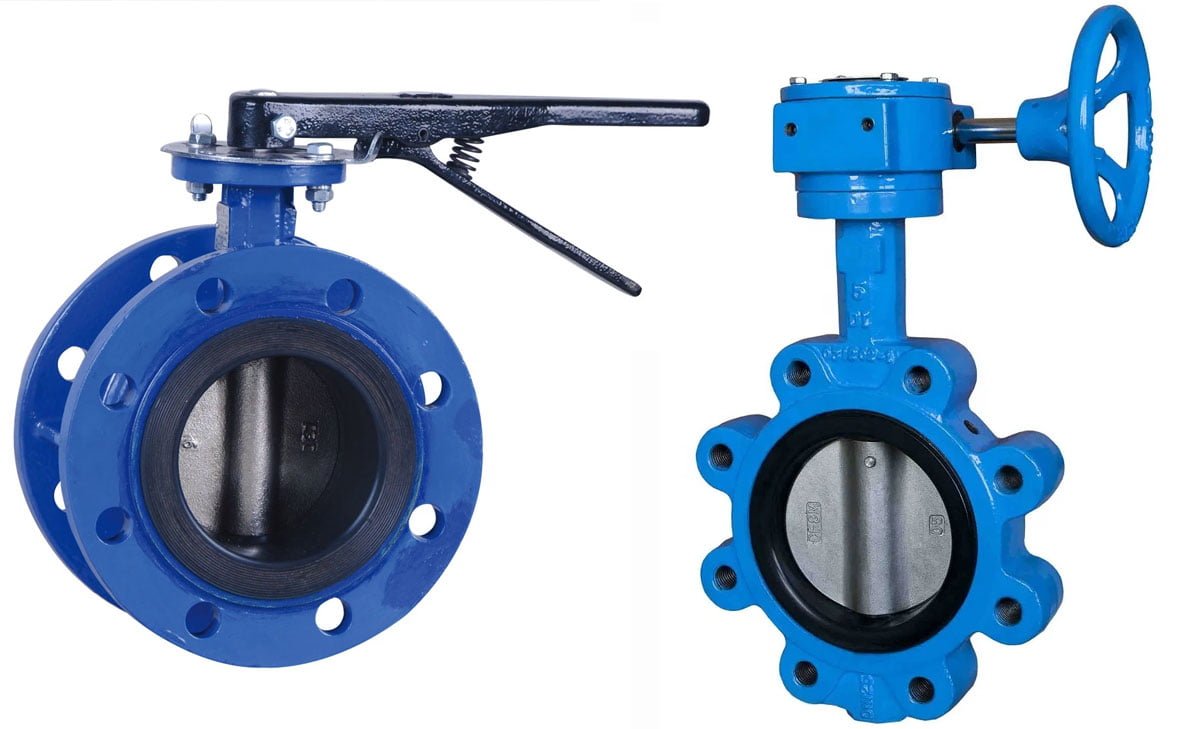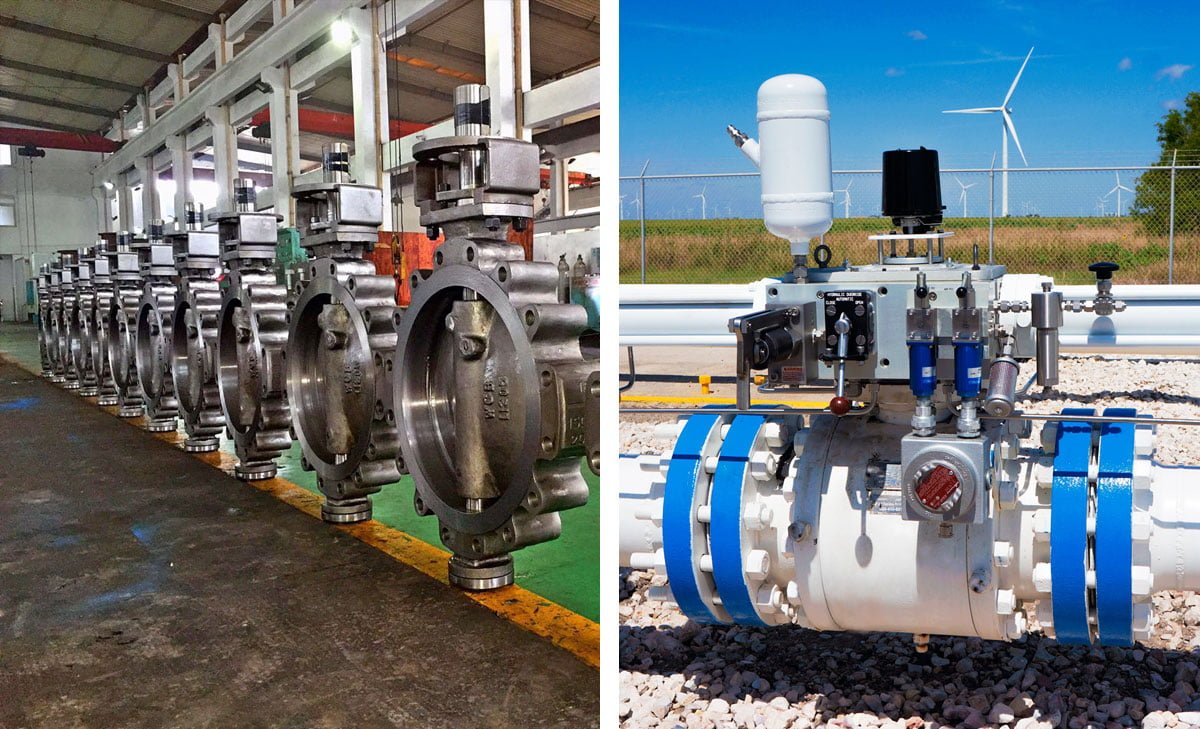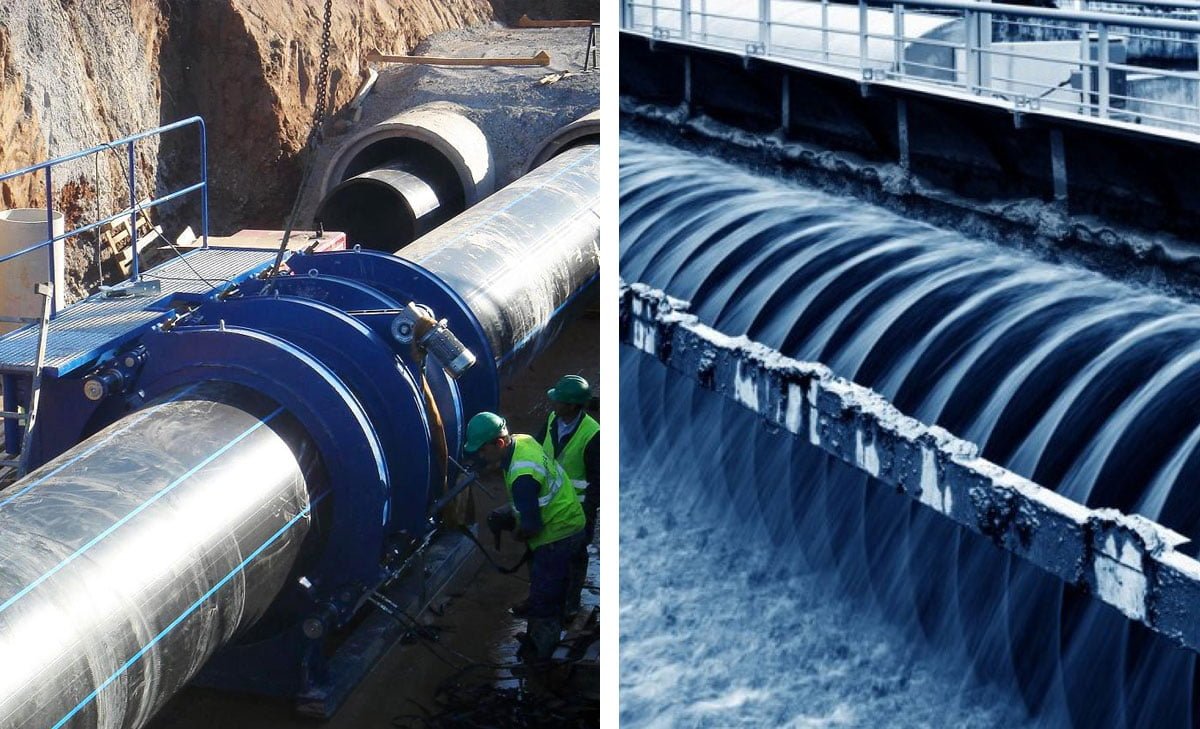The Ultimate Guide to API 609 Butterfly Valves

Table of Contents
ToggleIntroduction to API 609 Butterfly Valves
When it comes to flow control in various industrial applications, API 609 butterfly valves play a crucial role. These valves, available in wafer and lug types, are known for their compact design, cost-effectiveness, and quick operation. With the ability to handle both gaseous and liquid services, API 609 butterfly valves are widely utilized in HVAC, chemical processing, food and beverage, power and utilities, as well as water supply and wastewater treatment industries. In this comprehensive guide, we will delve into the application, advantages, and features of API 609 butterfly valves, shedding light on their significant role in modern industrial processes.
Understanding API 609 Butterfly Valves
API 609 Butterfly Valves are crucial components in control and regulation within industrial piping systems. These valves are designed to control the flow of various substances such as water, air, steam, oil, and gas by means of a rotating disc. Understanding these valves involves delving into their structure and the standards they adhere to.
What Are API 609 Butterfly Valves?
API 609 Butterfly Valves come in two categories: Category A and Category B. Category A valves, also known as concentric type, feature a rubber-lined design suitable for low-pressure systems. On the other hand, Category B valves, known as offset type, are capable of handling higher differential pressures and offer a variety of seat materials, making them suitable for a wide range of temperatures and pressures.
The Importance of API Standards for Butterfly Valves
Adherence to API standards, particularly API 609, ensures that butterfly valves meet specific design and performance criteria. These standards dictate the face to face dimensions for wafer end, flange end, and lug end valves, ensuring consistency and compatibility across different systems. The standards also address aspects such as materials, testing, and performance requirements, crucial for ensuring the reliability and functionality of these valves in industrial applications.
Types of API 609 Butterfly Valves
Wafer Type Butterfly Valves
Wafer type butterfly valves are designed to fit between flanges, making them a popular choice for applications with limited space. These valves are lightweight and compact, making them easy to install and maintain. Their simple design allows for quick operation and efficient flow control. Wafer type butterfly valves are suitable for low-pressure applications and are commonly used in industries such as water treatment, HVAC, and irrigation systems.
Lug Type Butterfly Valves
Lug type butterfly valves are designed with threaded inserts on both sides of the valve’s body, allowing easy installation and removal of the valve from the pipeline. Their unique design prevents any stress transfer to the flange connections, making them ideal for applications that require frequent maintenance or where high-pressure conditions are present. Lug type butterfly valves are commonly used in industrial applications such as chemical processing, power plants, and oil and gas refineries.

Design Features of API 609 Butterfly Valves
Body Styles and Their Applications
API 609 Butterfly Valves are available in different body styles, including wafer and lug types. The wafer type is designed to fit between two flanges, making it a space-saving option suitable for low-pressure applications such as water supply and HVAC systems. On the other hand, the lug type features threaded inserts and can be installed without using flanges, making it an ideal choice for high-pressure applications, such as industrial processes and oil and gas operations.
Disc Designs and Materials
The disc of API 609 Butterfly Valves comes in various designs, including concentric and eccentric. The concentric design ensures a uniform pressure distribution, making it suitable for general-purpose applications. In contrast, the eccentric design enables a tighter seal, making it suitable for handling abrasive or corrosive media. Additionally, the discs are constructed from materials such as stainless steel, carbon steel, and ductile iron, providing options for compatibility with different operating conditions.
Seat Types and Material Selection
The seats of API 609 Butterfly Valves are typically made of resilient materials such as EPDM, PTFE, and Buna-N. These materials offer excellent sealing properties and resistance to chemicals, making them suitable for a wide range of applications. The selection of seat material depends on factors such as the temperature, pressure, and the nature of the media being handled. For instance, EPDM seats are ideal for water and wastewater applications, while PTFE seats are preferred for handling corrosive chemicals due to their chemical resistance properties.
Installation Considerations for API 609 Butterfly Valves
Wafer Type Valve Installation Process
The installation process for wafer type API 609 butterfly valves is crucial for ensuring optimal performance and longevity. To begin, carefully position the valve between the companion flanges and align the bolt holes. Secure the valve in place with the specified bolts and nuts, ensuring they are torqued to the manufacturer’s recommended specifications. It is imperative to follow the correct bolt tightening sequence to prevent uneven pressure distribution and potential leaks.
Next, align the valve stem with the actuator or gearbox and ensure proper coupling. Confirm that the valve operates smoothly and without any obstructions. Additionally, perform a thorough inspection of the flange gaskets to guarantee a secure seal and prevent leakage. Finally, conduct a pressure test to validate the integrity of the installation and confirm that the valve functions as intended.
Lug Type Valve Installation Steps
When installing lug type API 609 butterfly valves, it is essential to follow specific steps to ensure a secure and efficient assembly. Begin by aligning the valve with the flange connections and inserting the bolts through the lugs on the valve body. Subsequently, attach the nuts and tighten them evenly to secure the valve in place. It is crucial to adhere to the prescribed torque values to prevent damage to the valve components and flanges.
After securing the valve, align the stem with the actuator or gearbox to facilitate smooth operation. Verify that the connection is secure and free from any misalignments. Additionally, inspect and replace the gaskets as necessary to maintain a leak-free installation. A comprehensive pressure test should be performed to validate the integrity of the assembly and ensure reliable performance under operating conditions.
Operating API 609 Butterfly Valves
API 609 butterfly valves are commonly operated manually or through automated valve actuation. These operating mechanisms are essential for controlling the flow of fluids within a pipeline system and are designed to meet the specific requirements of diverse industrial applications.
Manual Operation Mechanisms
Manual operation of API 609 butterfly valves involves the use of hand-operated levers or gearboxes. The hand-operated levers provide a simple and effective means of opening and closing the valve, allowing for precise regulation of fluid flow. In contrast, gearboxes are utilized for applications that require higher torques and reduced operating forces. This manual operation mechanism offers flexibility and reliability in various industrial settings, providing ease of use and maintenance.
Automated Valve Actuation
Automated valve actuation, on the other hand, integrates electric, pneumatic, or hydraulic actuators to remotely control the operation of API 609 butterfly valves. Electric actuators enable precise positioning and continuous modulation, while pneumatic actuators offer quick and efficient valve operation. Hydraulic actuators are employed for high-pressure applications, ensuring reliable and robust performance. The automated valve actuation enhances operational efficiency, minimizes downtime, and facilitates real-time monitoring and control of fluid flow within industrial processes.
The operating mechanisms of API 609 butterfly valves, whether manual or automated, play a pivotal role in regulating fluid flow and optimizing process control, making them indispensable components in various industrial operations.
Maintenance and Troubleshooting
Routine Maintenance Practices for Longevity
To ensure the longevity and optimal performance of API 609 butterfly valves, routine maintenance practices are essential. Regularly inspecting the valves for signs of wear, corrosion, or leakage is crucial. Lubricating the moving parts and checking for any loose connections or abnormal vibrations can help prevent potential issues. Additionally, monitoring the valve’s operating conditions and adhering to the manufacturer’s recommended maintenance schedule can significantly extend the lifespan of the valves.
Common Issues and How to Address Them
Despite proper maintenance, API 609 butterfly valves may encounter common issues that require troubleshooting. One frequent issue is leakage around the valve seat, which can be addressed by replacing the seat or resealing it, depending on the extent of the damage. Another common problem is the buildup of debris or sediment, causing the valve to operate inefficiently. Regular cleaning and flushing of the valve can mitigate this issue. Additionally, excessive wear on the valve disc or stem may lead to performance issues, often requiring replacement of the worn components. Proper diagnosis of the problem and timely intervention can help resolve common issues and ensure the smooth operation of API 609 butterfly valves.
Applications of API 609 Butterfly Valves
Industrial Applications of Butterfly Valves
Butterfly valves compliant with API 609 standards find extensive usage in various industrial applications due to their versatility and reliability. Industries such as oil and gas, chemical processing, water treatment, and power generation benefit from the efficient flow control provided by API 609 butterfly valves. These valves are commonly used for fluid regulation and isolation in pipelines, tanks, and fluid processing systems. Their ability to handle high-pressure and high-temperature fluids makes them well-suited for demanding industrial environments.
Specialized Applications Requiring API 609 Compliance
In addition to their widespread use in general industrial settings, API 609 butterfly valves are also essential in specialized applications where adherence to specific standards is crucial. Sectors such as marine and offshore, where safety and performance are paramount, rely on API 609 compliant butterfly valves for critical functions. Their deployment in these specialized environments ensures operational integrity and regulatory compliance. Whether in the form of wafer type or lug type configurations, these valves offer the precision and resilience necessary for demanding applications.
Choosing the Right API 609 Butterfly Valve
When selecting the appropriate API 609 butterfly valve for a particular application, various factors must be carefully considered to ensure optimal functionality and performance.
Factors to Consider When Selecting a Valve
- Operating Conditions: Evaluate the temperature, pressure, and flow rates within the system to determine the appropriate material and construction of the valve. For high-pressure or high-temperature applications, materials like stainless steel or duplex/super duplex steel may be necessary to withstand the conditions.
- Fluid Compatibility: Identify the type of fluid the valve will be handling as well as any corrosive or abrasive properties. Different materials or coatings may be required to ensure compatibility and longevity.
- Size and Pressure Class: Consider the valve size and pressure class that align with the system requirements to ensure proper flow control and system integrity.
- End Connection: Assess the preferred end connection type, such as wafer type or lug type, based on the installation and piping system needs.
- Regulatory Compliance: Ensure that the selected valve complies with relevant industry standards and regulations, such as API 609, to guarantee safety and performance reliability.
Custom Solutions for Unique Requirements
In some instances, standard off-the-shelf valves may not fully meet the unique specifications of a particular application. Custom solutions, tailored to address specific requirements, can be explored to ensure the optimal performance of the butterfly valve within the given system.
Customization options may include specialized materials, unique sizing, tailored end connections, or additional features designed to accommodate the specific intricacies of the application.
By partnering with experienced manufacturers and suppliers, custom solutions can be developed to address the distinct needs of a wide range of industries and applications, ensuring the precise functionality and efficiency of the API 609 butterfly valve in various operational scenarios.
Conclusion
In conclusion, understanding the application of API 609 butterfly valves is crucial for optimizing their use in various industries. The versatility of wafer type and lug type butterfly valves makes them suitable for HVAC, chemical processing, food and beverage, power and utilities, as well as water supply and wastewater treatment. Their compact design, lightweight, quick operation, and low maintenance costs make API 609 butterfly valves a cost-effective solution for numerous applications. The features such as the actuator flange, precision profile disc, and phenolic backed seat further enhance their performance and durability. As you explore the comprehensive guide to these butterfly valves, keep in mind their potential to streamline operations and ensure efficient fluid control in diverse settings.













